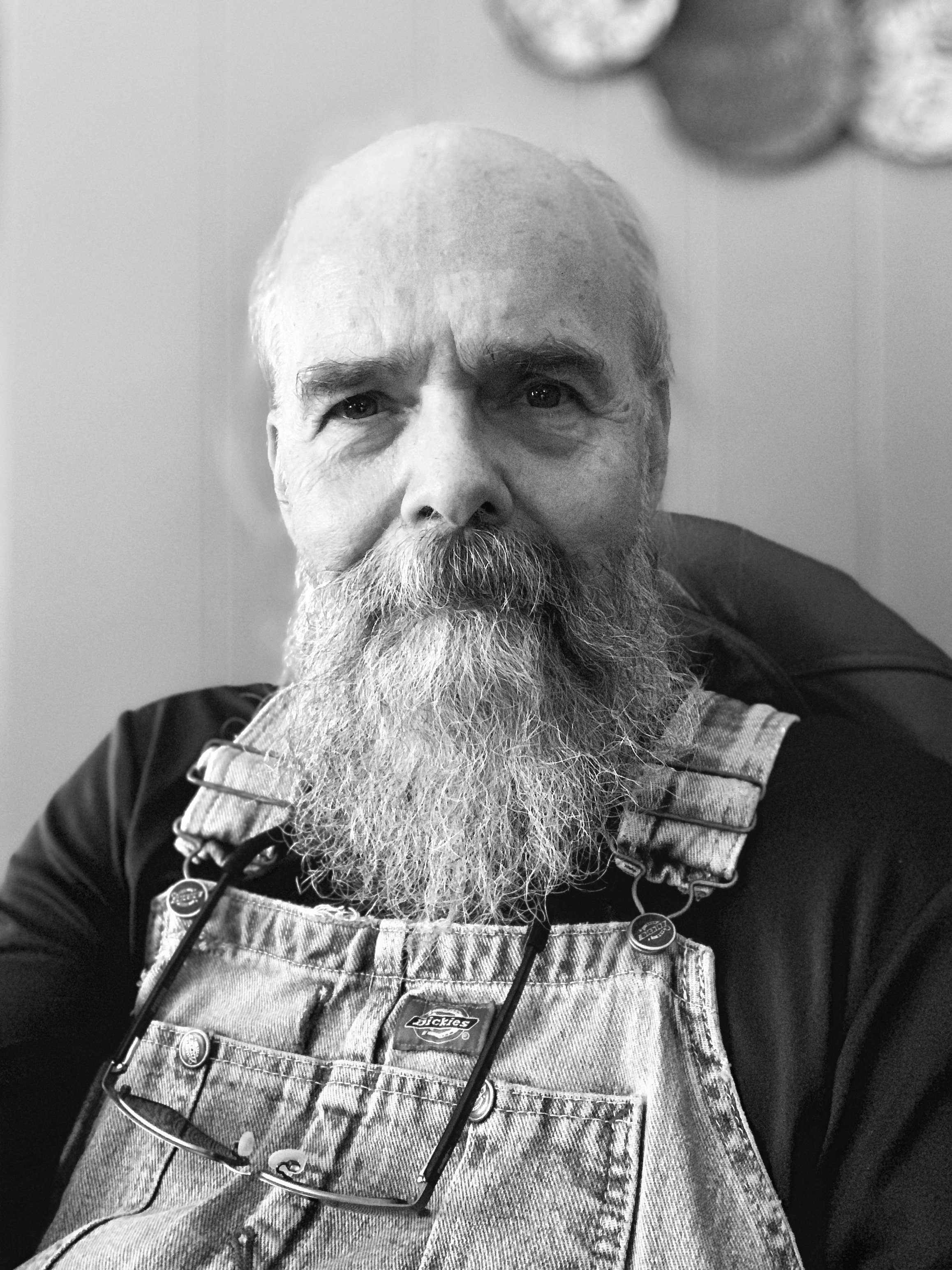EDWARD KORBER, PhD
Edward Korber works as a licensed clinical neuropsychologist in New York. For the past half century he has provided clinical care, primarily through public service hospital settings, to members of NYC's underserved populations. He is an advocate of life long learning and has earned a number of post doctoral certifications including behavior analysis, psycho-pharmacology, and substance abuse treatment interventions. He has also continued to serve in a number of leadership positions and committees of the American Psychological Association and NYS Psychological Association. More importantly, throughout this time, Ed has also worked collaboratively, along with the other self taught artists and volunteers, at the Living Museum located on the grounds of Creedmoor Psychiatric Center in Queens County. His current mantra… “ there is an artist in each of us who is aware of three basic truths: Nothing is perfect Nothing is finished Nothing lasts forever ... But we can also come to learn, to appreciate the beauty in our imperfect world and lives that surround and embrace us.”
Entre Chien et Loup
(ink and pastel chalks on government paper form (8.5" x 11"))
"Do you know, if only I were a painter I would make a picture”
Jung turned these hints from others to practical account and often urged his patients to paint what they had seen in their dreams and fantasies. And when met with the objection:
"But I am not a painter."
His reply and rational to us:
“neither are modern painters-for which very reason modern painting is absolutely free”-and that it is… “not a question of the beautiful, but… of the trouble one takes with the picture… How little my way of painting has to do with ‘art’. To paint what we see before us is a different matter from painting what we see within… we are speaking not of people who have still to prove their social usefulness, but of those who can no longer find significance in their value to society…who have come upon the deeper and more dangerous question of the meaning of their individual lives... It is not a question of art … but of something more… namely the living effect upon the patient himself. The meaning of an individual life, whose importance from the social standpoint is negligible, is here accorded the highest value, and for its sake the patient struggles to give form, however crude and childish, to the inexpressible… why do I encourage patients to express themselves… My purpose is the same… as in my handling of dreams: I wish to produce an effect…in the childish condition, the patient remains in a passive state; but now he begins to play an active part….he puts on paper what has come to him in fantasy… gives it the status of a deliberate act… not only talks about it, but is actually doing something about it. Psychologically… it is one thing for a person to have an interesting conversation with his doctor… quite another… to struggle for hours … with refractory brush and colours… to produce in the end something which, at its face value, is perfectly senseless. Were his fantasy really senseless to him, the effort to paint it would be so irksome that he could scarcely be brought to perform this exercise a second time. But since his fantasy does not seem entirely senseless, busying himself with it increases its effect upon him… to give visible form to the image enforces a study of it in all its parts… its effects can be completely experienced.
The discipline of drawing endows the fantasy with an element of reality, lending it… weight and greater driving power… these crude pictures do produce effects which I must admit, are rather difficult to describe. When a patient has seen once… how he is freed from a wretched state of mind by working at a symbolical picture, he will thenceforward turn to this means of release when things go badly... something invaluable is won, a growth of independence a step toward psychological maturity. “
Yes…Too free ourselves from growth stifling constraints... to come to know ourselves better.


